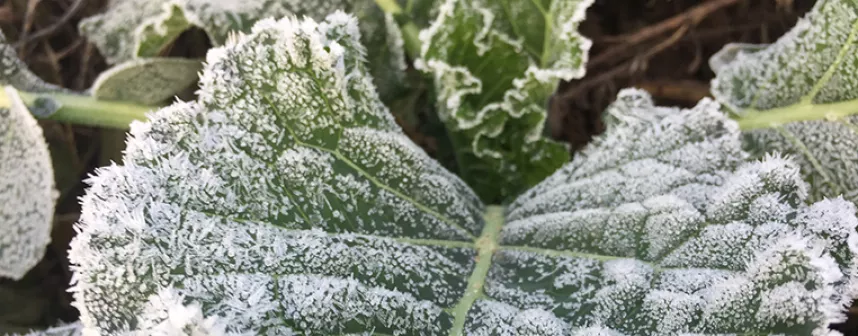Why the kale season only begins after the first frost has come
November 28, 2019
The car windows freeze over and ice crystals decorate the trees. The kale season in Northern Germany begins always after the first frost has come. But why is that so? Though chefs from Northern Germany know, that kale simply tastes better then, there has been no scientific answer to this question, yet. However, Professor Nikolai Kuhnert of Jacobs University Bremen and Professor Dirk Albach of the University of Oldenburg, have now found an answer to this question together with their working groups. The findings were published in the journal “Food Research International”.
, Prof. Nikolai Kuhnert is Profesor of Chemistry at Jacobs University Bremen. (Source: Jacobs University)The researcher exposed three different kinds of kale to normal and cold temperatures in Oldenburg. Subsequently, the kale leaves were examined for its ingredients in Bremen. At cold temperatures, the plant transforms complex carbohydrates in its cell walls into smaller sugar molecules, all of which are sweet and make the kale taste better. Plants, which were previously exposed to cold temperatures, contained elevated concentrations of sugar, especially fructose, melibiose, maltose, and raffinose.
Why does this happen to the plant? The plant benefits from so-called colligative properties of sugar. These are based on the number of particles in a solution. In the case of kale, it causes the freezing point to be lowered. To prevent the water in its cells from freezing, it increases the number of particles in the cells. Complex cell wall carbohydrates are transformed to many sweet sugar particles, which protect the cabbage from frost. The same phenomenon can be observed when salt is spread in winter. A large number of salt particles lower the freezing point of water, the ice melts after scattering and one won’t slip.
Source:
Food Research International, 2020, 127, 108727
https://www.sciencedirect.com/science/article/pii/S0963996919306131
